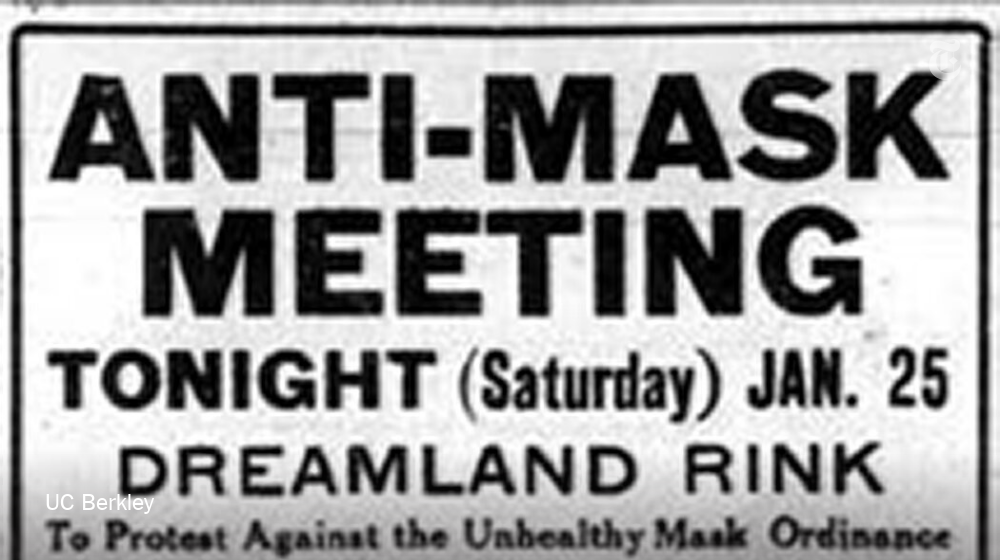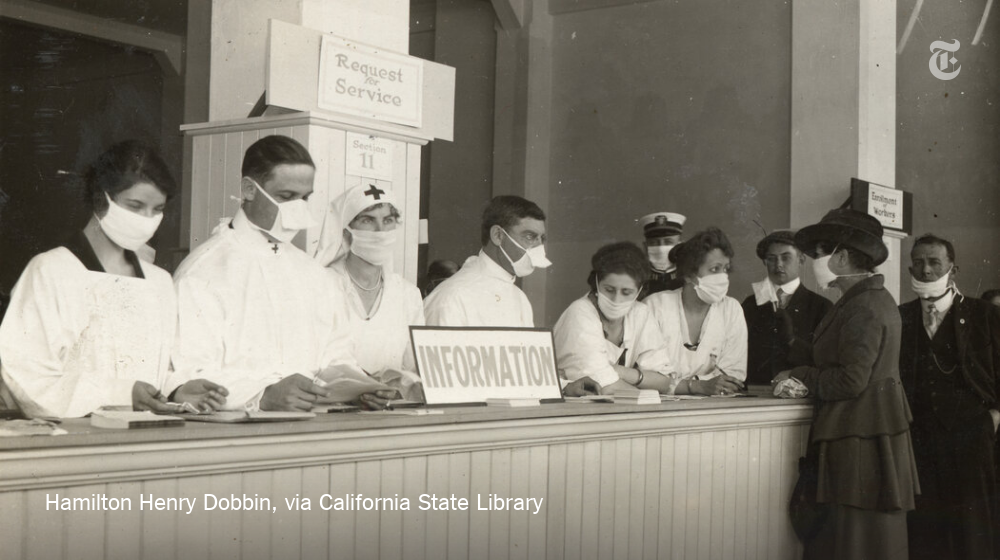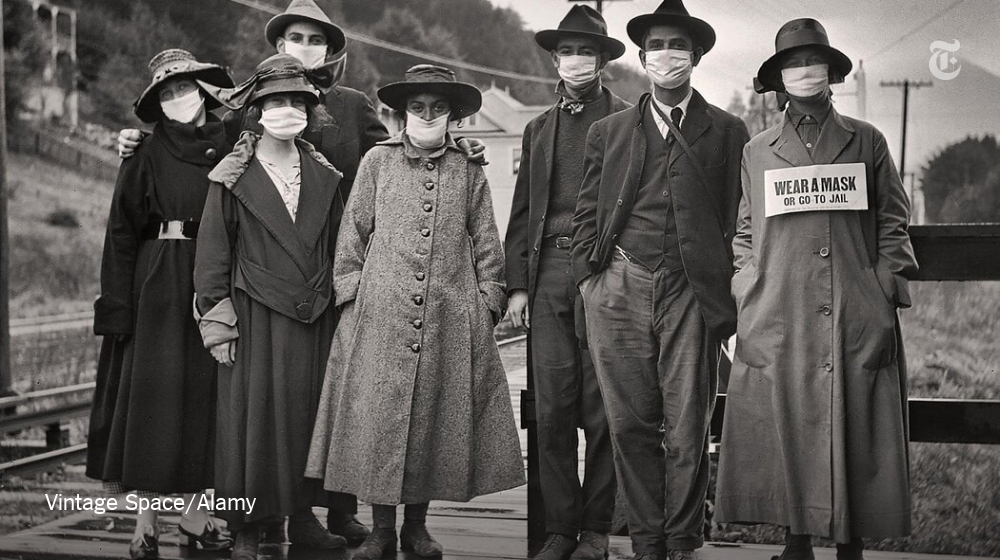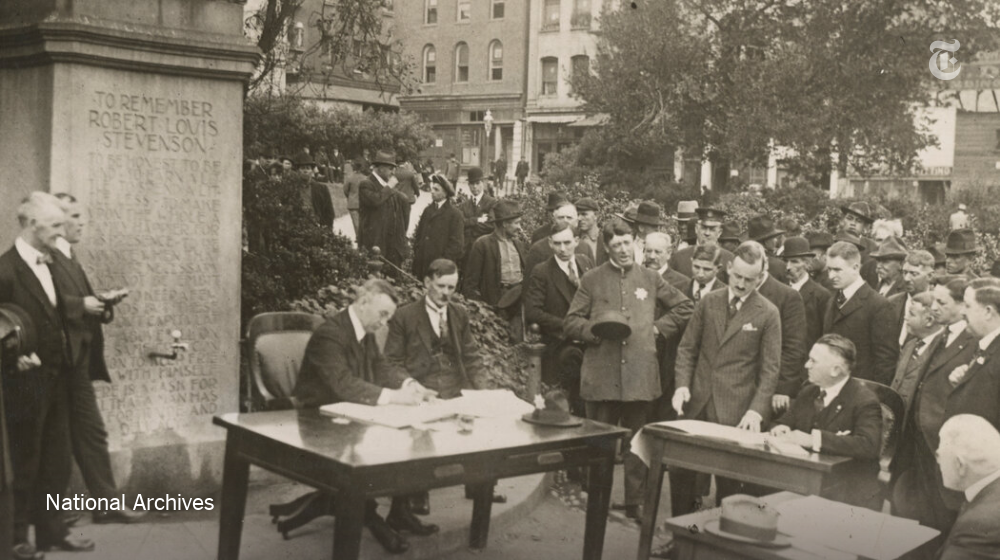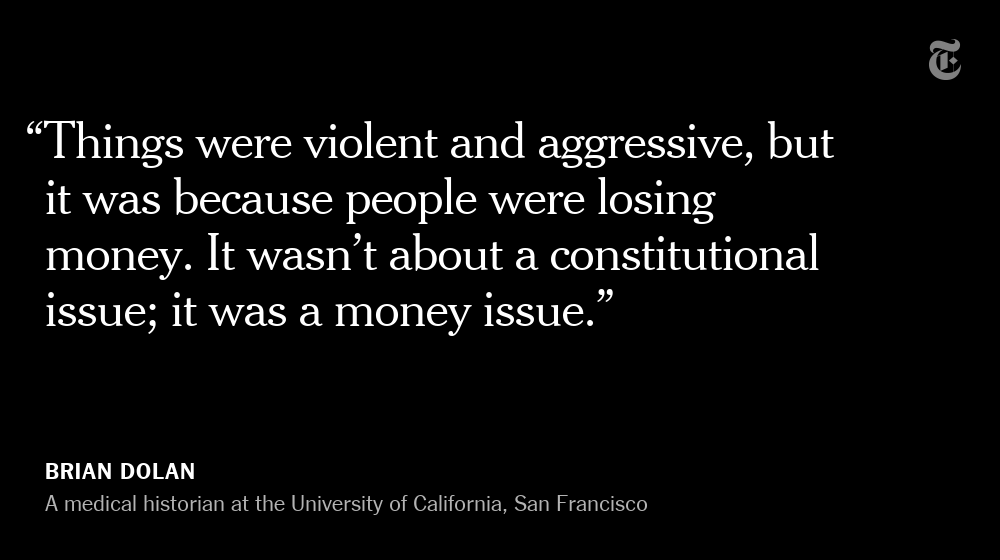In 1918 and 1919, masks also stoked political division. Then, as now, medical authorities urged people to wear them to help slow the spread of disease. And then, as now, some people resisted.
Here& #39;s how that started — and what it looked like. https://nyti.ms/3k4Lx41 ">https://nyti.ms/3k4Lx41&q...
Here& #39;s how that started — and what it looked like. https://nyti.ms/3k4Lx41 ">https://nyti.ms/3k4Lx41&q...
Masks were called muzzles, germ shields and dirt traps. They gave people a “pig-like snout.”
Some snipped holes in their masks to smoke cigars. Others fastened them to dogs in mockery.
Bandits used them to rob banks.
There were calls to protest, like this one in California.
Some snipped holes in their masks to smoke cigars. Others fastened them to dogs in mockery.
Bandits used them to rob banks.
There were calls to protest, like this one in California.
The first U.S. cases of the 1918 influenza pandemic came in March. By fall, 7 cities — San Francisco, Seattle, Oakland, Sacramento, Denver, Indianapolis and Pasadena, California — had mandatory mask laws.
San Francisco was at the forefront, becoming known as the “masked city.”
San Francisco was at the forefront, becoming known as the “masked city.”
Complaints mounted about masks shortly after the first order was passed — even after the flu killed an estimated 195,000 Americans in October 1918 alone.
The penalty for violators in San Francisco was $5 to $10, or 10 days’ imprisonment.
The penalty for violators in San Francisco was $5 to $10, or 10 days’ imprisonment.
On Nov. 9, 1,000 people were arrested, The San Francisco Chronicle reported. City prisons swelled to standing room only.
At outdoor court sessions, jail terms of 8 hours to 10 days were given out. Those who could not pay $5 were jailed for 48 hours.
At outdoor court sessions, jail terms of 8 hours to 10 days were given out. Those who could not pay $5 were jailed for 48 hours.
San Francisco’s mask ordinance expired after 4 weeks at noon on November 21, 1918. The spread had been halted. But a second wave was on the horizon.
By December, the San Francisco Board of Supervisors was again proposing a mask requirement. It was met with testy opposition.
By December, the San Francisco Board of Supervisors was again proposing a mask requirement. It was met with testy opposition.
By the end of 1918, the flu’s death toll reached at least 244,681, mostly in the last 4 months, according to government statistics.
But opposition to masks continued: The "Anti-Mask League," which has seen renewed interest today, held its first meetings in January of 1919.
But opposition to masks continued: The "Anti-Mask League," which has seen renewed interest today, held its first meetings in January of 1919.
In the end, the U.S. death toll reached an estimated 675,000; San Francisco was one of the worst-hit cities.
"Masks turned into a political symbol," a medical historian said.
Read more on how they took a role in cultural wars a century ago. http://nyti.ms/3k4Lx41 ">https://nyti.ms/3k4Lx41&q...
"Masks turned into a political symbol," a medical historian said.
Read more on how they took a role in cultural wars a century ago. http://nyti.ms/3k4Lx41 ">https://nyti.ms/3k4Lx41&q...

 Read on Twitter
Read on Twitter